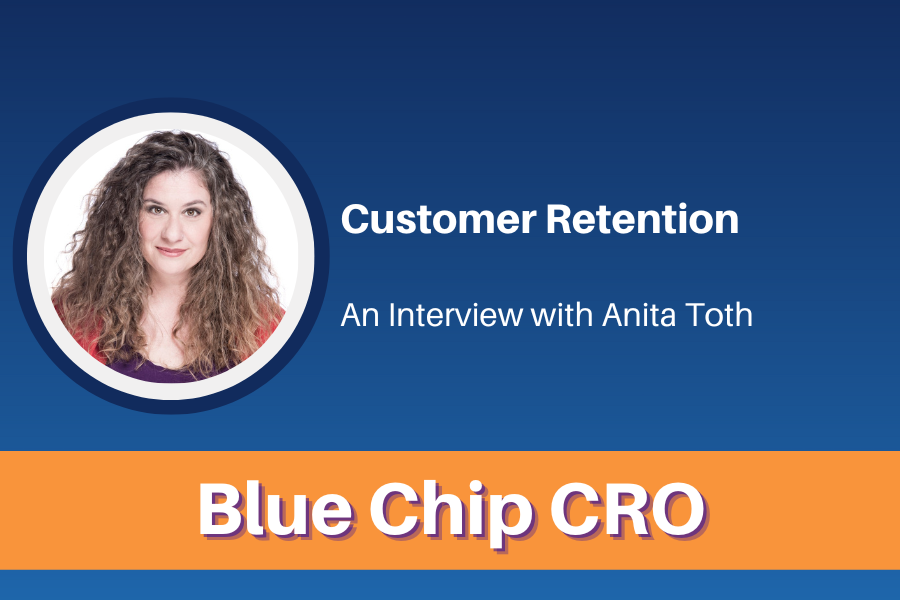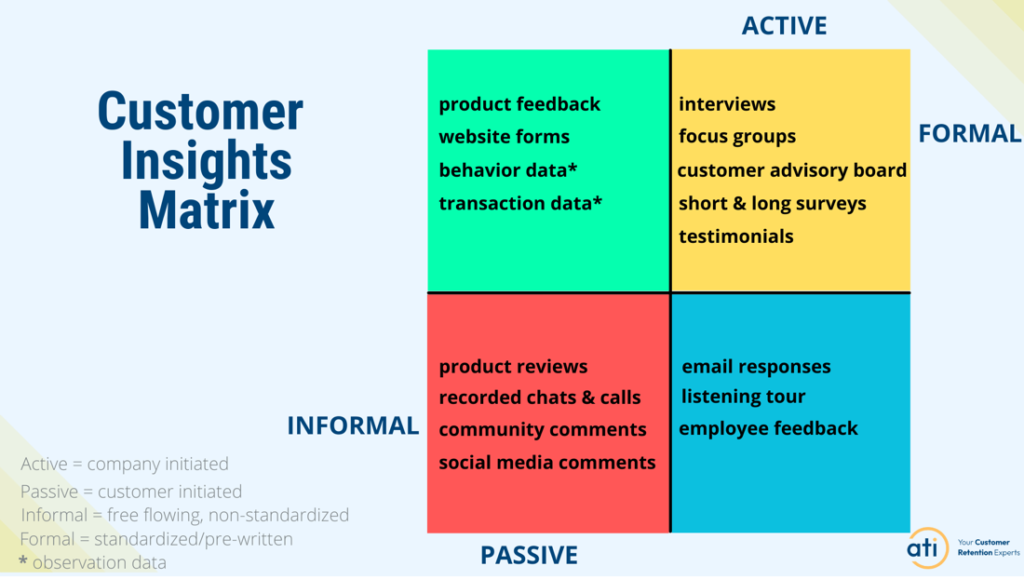
Can I just say, it’s about time companies start doing more about customer retention instead of just talking about it!
There’s been a lot of focus on growth at all costs, especially for SaaS companies, specifically funded SaaS companies. Profitability is often a reactive problem that many can’t turn around. Companies forget to onboard customers properly, which starts the customer churn process. I previously interviewed Donna Weber, the onboarding expert, and talked about customer success teams being siloed and often focused on going live with product rather than delivering customer value.
Today we’re talking about a similar challenge and how companies can focus on customer retention efforts, both reactively and proactively. Enter Anita Toth, Chief Churn Crusher at ATI.
Question 1: What are some common reasons why customer retention becomes an afterthought?
Familiarity
- We all know what selling involves. We understand marketing (especially advertising) because we encounter both daily. Customer retention, on the other hand, is less obvious. It’s so hidden that if I ask you “What does customer retention look like”, I bet you will have a hard time answering.
Cultural influence
- Let’s face it, retaining a customer isn’t as exciting or sexy as acquiring a new customer. Acquiring new customers has shorter timelines – days, and months. It has a distinct end goal – get the prospect to buy and then move on to the next prospect. There’s excitement with customer acquisition! Customer retention on the other hand is different. The end goal is to get the customer to renew repeatedly. And customer retention can last from months to many years. Customer retention has the undercurrent of stability. This slower, stable focus isn’t as appealing to founders, CEOs, boards, and investors who thrive on the excitement of customer acquisition and growing a company.
Question 2: What are a few quick actions companies can take to jumpstart a good customer retention strategy?
Here’s one action that every company can start today: TALK TO YOUR CUSTOMERS.
If you’re the CEO or Founder:
- Have a 15-minute call with one of your best customers.
- Have a 15-minute call with one of your at-risk customers.
Ask both customers:
- What are they happy with?
- What are they unhappy with?
- Why did they buy?
- Why do they stay?
- Most importantly – Have they seen success with your product or service?
You will immediately see the differences between your best customer and your at-risk one. Now these are only two customer types you’ve spoken to. The bigger questions are:
- What are the rest of your customers thinking?
- How many of them are thinking the same things?
- How many of them are at risk of churning?
Question 3: What are some common reasons why customers churn? Are there a few secrets you can share on how companies can prevent this?
Customers almost never churn because of price. I’ll say that again…CUSTOMERS ALMOST NEVER CHURN BECAUSE OF PRICE. They churn because they didn’t find value or success with your product or service. Or they’ve had very poor customer experiences.
Customers tell you that it’s price because, well, it’s the easiest answer to give. No one ever questions once a customer says that.
If you speak to some of your churned customers and ask them why they left, you’ll find that price is rarely in the top three.
The secret to preventing churn is to have a process in place to continually speak directly to your customers – your best customers, your at-risk customers, and your churned ones – to gather data. Surveys aren’t enough; they are a monologue. Collecting this data must come from a dialogue.
You need someone who talks to your customers. Who can dig down deep and find out what’s really happening with their thoughts, feelings, wants, and needs.
Question 4: How difficult is it to collect customer feedback? Do we need data nerds to build AI/ML models, or can your average manager manage a customer feedback program?
Here’s how an average manager can collect customer insights:
- Start small.
- Pick customer interviews + two other activities from this matrix.
- Ask the exact same questions in all your customer interviews. This is your qualitative data.
- You can use it to benchmark responses and track changes over time.
- Customer interviews are not casual conversations. They are a scientific data collection method.
- Interviews collect insights that surveys and hard data cannot collect.
- The insights you gain become your competitive advantage.

Question 5: What are some key customer insights needed to help drive a predictable customer retention strategy?
Here are five key customer insights you should be continuously gathering:
- What are your customers happy with?
- What are your customers unhappy with?
- Why did they buy from you?
- Why do they stay with you?
- Most importantly– Have they seen success with your product or service? If so, what are those successes?
Wrap Up
There you have it! A few simple, but critical, takeaways that you can implement starting tomorrow to get a proactive handle on customer retention. Remember, customer retention isn’t an event; it’s a journey. The way to stay ahead of this is to talk to your customers.
About Anita
Anita Toth is the Chief Churn Crusher at ATI, a professional services Customer Retention Research, Strategy & Education firm serving B2B SaaS companies. Anita’s mission is to create happier customers & more profitable businesses. She helps companies discover that their customer base holds the key to their competitive advantage and profitable growth by better understanding what their customers want, need, think & feel. She is a 5-time award winner in Customer Success & Business Innovation. She also teaches the highly popular Difficult Customer Conversations course with SuccessCoaching. Anita is currently writing her first book on Customer Retention.
Website – https://ati.ac/
LinkedIn – https://www.linkedin.com/in/anitamtoth/
Ed Porter | Fractional CRO
- Subscribe to my Not Another Newsletter
- Subscribe to my blog here
- Follow Blue Chip CRO on LinkedIn
- Wanna chat? Book some time with me